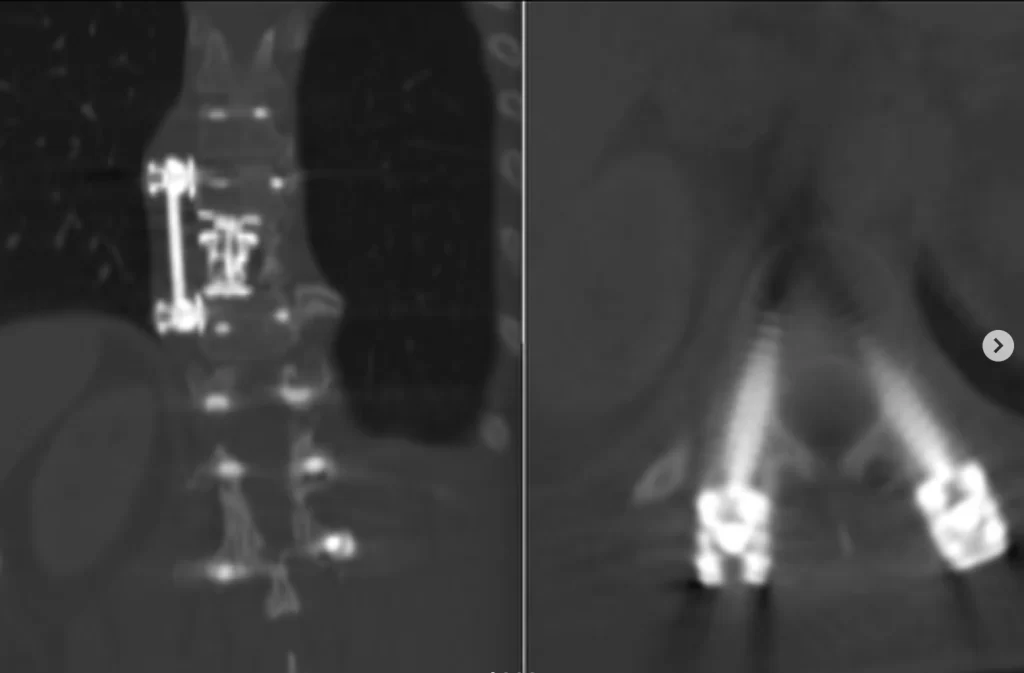Lumbar disc herniation, a common yet debilitating condition, affects millions of individuals worldwide. When faced with the symptoms and challenges of this condition, seeking the expertise of a seasoned specialist is paramount. Assoc. Prof. Dr. Tolga Turan Dündar stands out as a leading authority in the diagnosis and treatment of lumbar disc herniation in Istanbul. His extensive experience and dedication to patient care make him a top choice for those seeking relief and recovery.

Spinal Diseases Rehabilitation Methods in Istanbul
Understanding Lumbar Disc Herniation
Lumbar disc herniation occurs when the soft, gel-like center of a lumbar disc pushes through a tear in the tougher exterior casing. This herniation can press on the nerves of the spine, causing pain, numbness, or weakness in the lower back, legs, and sometimes the feet. The condition often results from age-related wear and tear known as disc degeneration, but it can also be triggered by trauma or injury.
The impact of lumbar disc herniation on daily life can be profound, affecting one’s ability to perform routine tasks and enjoy activities. Individuals may find themselves avoiding physical exertion, experiencing difficulty in maintaining proper posture, or struggling with prolonged sitting or standing. Sleep disturbances are also common, as finding a comfortable position can be challenging. These disruptions not only diminish quality of life but can also lead to emotional stress and decreased productivity. Understanding these implications underscores the importance of seeking timely and expert medical intervention to manage symptoms and restore functionality.
Symptoms of Lumbar Disc Herniation
Lumbar disc herniation can cause a range of symptoms that significantly impact daily life. These symptoms often include lower back pain, which can vary from a dull ache to a sharp, burning sensation. Patients may also experience sciatica, with pain radiating down one leg, sometimes reaching the foot. Numbness or tingling in the leg or foot is common, indicating nerve involvement, and muscle weakness can occur, making it difficult to lift objects or maintain balance.
Patients with lumbar disc herniation may experience a variety of symptoms, which can vary in intensity:
Lower Back Pain: Often the most prevalent symptom, this pain can range from a dull ache to a sharp, burning sensation.
Sciatica: Pain radiating down one leg, often reaching the foot.
Numbness or Tingling: This can occur in the leg or foot, indicating nerve involvement.
Weakness: Affected muscles may weaken, making it difficult to lift or hold items or maintain balance.
Diagnostic Approach
Dr. Tolga Turan Dündar employs a comprehensive diagnostic approach to accurately identify lumbar disc herniation. Initial evaluations typically involve a detailed patient history and a physical examination. Imaging tests such as MRI or CT scans are often utilized to confirm the diagnosis and assess the extent of the herniation.
Assoc. Prof. Dr. Tolga Turan Dündar adopts a meticulous diagnostic strategy aimed at precisely identifying lumbar disc herniation. His approach begins with a thorough review of the patient’s medical history and a comprehensive physical examination. Leveraging advanced imaging technologies like MRI or CT scans, Dr. Dündar meticulously evaluates the spine to confirm the presence of herniation and ascertain its severity. This methodical process ensures accurate diagnosis, laying the groundwork for effective treatment planning tailored to each patient’s unique needs.

Spinal Diseases: Symptoms & Diagnosis by Tolga Turan Dundar in Istanbul
Treatment Options
Treatment for lumbar disc herniation can vary based on the severity of symptoms and the specific needs of the patient. Dr. Dündar offers a range of options:
Conservative Treatments
- Physical Therapy: Tailored exercises and stretches to strengthen the muscles supporting the spine and improve flexibility.
- Medications: Pain relievers, anti-inflammatory drugs, and muscle relaxants to manage symptoms.
- Epidural Steroid Injections: Injections to reduce inflammation and alleviate pain.
Surgical Interventions
For patients who do not respond to conservative treatments, surgery might be recommended. Dr. Dündar is proficient in the latest surgical techniques, including:
- Microdiscectomy: A minimally invasive procedure to remove the herniated portion of the disc.
- Laminectomy: Removing part of the vertebra to relieve pressure on the spinal cord or nerves.
- Spinal Fusion: Joining two or more vertebrae to stabilize the spine.
Post-Treatment Rehabilitation
Recovery from lumbar disc herniation treatment involves a structured rehabilitation program to ensure a full return to normal activities. Dr. Dündar’s rehabilitation plans are designed to:
- Enhance spinal stability.
- Restore strength and mobility.
- Prevent recurrence of symptoms.
Why Choose Assoc. Prof. Dr. Tolga Turan Dündar?
For patients in Istanbul seeking lumbar disc herniation treatment, Assoc. Prof. Dr. Tolga Turan Dündar offers an unmatched level of expertise and care. With years of specialized training and practice in spinal disorders, Dr. Dündar brings a wealth of knowledge and experience to his patients.
He employs advanced techniques and cutting-edge technology for precise diagnosis and effective treatment, ensuring optimal outcomes. Moreover, Dr. Dündar is dedicated to providing patient-centered care, crafting individualized treatment plans with compassion and empathy, making him a trusted choice for those seeking relief from lumbar disc herniation.
Patients seeking lumbar disc herniation treatment in Istanbul will find unparalleled care with Assoc. Prof. Dr. Tolga Turan Dündar. His qualifications include:
- Expertise: Years of specialized training and practice in spinal disorders.
- Advanced Techniques: Utilization of cutting-edge technology and methods in both diagnosis and treatment.
- Patient-Centered Care: A commitment to individualized treatment plans and compassionate care.
Lumbar disc herniation can significantly impact quality of life, but with the right treatment and specialist, relief is within reach. Assoc. Prof. Dr. Tolga Turan Dündar offers comprehensive and effective solutions for lumbar disc herniation in Istanbul, ensuring patients receive the highest standard of care. If you or a loved one is struggling with symptoms of lumbar disc herniation, consider consulting with Dr. Dündar for a thorough evaluation and a tailored treatment plan. Your journey to recovery and a pain-free life could begin with a single appointment.

